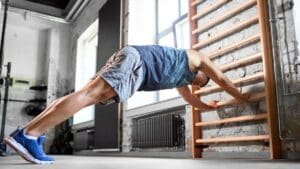
Scraping the skin to reduce soreness sounds more like ancient folk medicine than modern sports science. But intuitive as it may be, elite athletes swear by muscle scraping’s effects. The technique purports to increase blood flow, reduce inflammation, and prevent injuries. The origins trace back to ancient Chinese healers armed only with basic tools and herbal oils. Yet now, as athletes seek natural hacks, muscle scraping is attracting renewed interest. Let’s take a look at whether this unconventional treatment offers measurable benefits or just leaves you sore.
What is Muscle Scraping?
Muscle scraping, also known as Gua Sha, involves using a smooth tool to repeatedly scrape the skin’s surface. Originating in Chinese medicine centuries ago, it aims to improve blood flow and promote healing.
The scraping boosts microcirculation, delivering nutrient-rich blood to muscles while clearing metabolic waste. This enhanced circulation is thought to reduce inflammation, alleviate soreness, and increase range of motion.
Modern research indicates muscle scraping may enhance cardiovascular function and weightlifting performance. However, larger studies are needed to confirm effects across diverse athletic populations.
Benefits for Muscle Scraping for Athletes
Although large-scale studies on muscle scraping are still limited, there are plenty of reasons for athletes to give this technique a try. Early research and anecdotal evidence indicate muscle scraping provides tangible benefits that can aid performance and recovery. Here are some of the key potential perks for athletes
:
- Increases Circulation: Scraping boosts blood flow, delivering more oxygen and nutrients to muscles. This can enhance endurance by allowing muscles to operate longer before fatigue. Improved circulation also promotes recovery by efficiently supplying nutrients needed for repair.
- Anti-Inflammatory Effects: Scraping stimulates circulation, reducing inflammation that can inhibit performance and slow recovery. Less inflammation enables athletes to continue training through challenging regimens. The anti-inflammatory effects also accelerate recovery between workouts.
- Pain Relief: Increased blood flow can ease sore, stiff muscles and joints. This allows athletes to perform without pain hindering their movement. The pain relief also enables faster return to training after intense workouts.
- Improved Range of Motion: Scraping helps break down scar tissue and adhesions, enhancing flexibility. Better range of motion lets athletes maximize the effectiveness of each movement. Enhanced flexibility also helps athletes reduce injury risk.
- Injury Prevention: Flexible, healthy muscles are less prone to strains and tears. Regular muscle scraping keeps muscles supple and less susceptible to damage. The injury prevention allows more consistent training with fewer interruptions.
- Improve Exercise Performance: Muscle scraping may boost weightlifting strength and cardiovascular function. Studies show it can enhance performance measures like heart rate variability and perceived exertion during exercise. This allows athletes to train harder.
How to Choose the Right Muscle Scraper
Venturing into the world of muscle scrapers can feel pretty overwhelming at first. With so many sizes, shapes, materials out there, how do you know which muscle scraping tool to choose? It’s enough to make your head spin. But take a breath – once you understand the basic factors of shape and material, finding the right match doesn’t have to be hard.
Importance of Shape
Concave edges are ideal for large sweeping strokes on broad muscles. The curved shape hugs the contours of muscle groups for efficient coverage. Convex scrapers contain outwardly curved edges that penetrate thick tissue to relieve deep tension. Their shape applies focused pressure to break up knots. Scrapers with rounded corners allow precise targeting of smaller zones. The rounded shape isolates trigger points and fits between tendons. With an array of shapes available, choose a tool aligned with your problem areas and desired pressure. The scraper’s form impacts its function on the body. My go to for a simple Gua Sha tool is the Sidekick Curve Muscle Scraper.
Finding the Right Material
The composition of the scraper tool significantly impacts its performance and longevity. When selecting a material, consider how it affects pressure application and efficiency. Lightweight plastics and polymers often lack the heft required to adequately penetrate tissue. Scrapers made with these materials demand more exertion from the user to achieve results. On the other hand, dense materials like steel and stone conduct subtle vibrations when dragged over knotted, adhesive tissue. These intelligent materials provide feedback indicating where focused pressure is needed most. Hard jade scrapes deeply when significant tension relief is required. They also retain heat while scraping.
Heated and Vibrating Muscle Scraping Tools
To be honest, I didn’t know heated and vibrating muscle scrapers were a thing. But it seems like a no-brainer! I love my new heated massage gun, so why not get the scraper, too.
Studies show heat relaxes muscles for deeper scraping penetration. Vibration provides massage-like loosening and tension relief. Together, heat and vibration boost circulation, provide tension relief, and complement the whole scraping experience. I’m going to checkout this popular one on Amazon TheraStone Heated Gua Sha Tool.
How to Scrape Muscles at Home
While professional scraping is ideal, you can safely treat yourself at home with proper technique. Pay close attention to these steps for maximizing benefits and avoiding injury.
While best performed by professionals, you can safely scrape muscles at home with proper precautions:
- Locate sore, tight, or scarred tissue to focus your scraping treatment.
- Use smooth, rounded scraping tools to avoid harming skin.
- Lubricate the skin with oil or cream to allow smooth tool glide.
- Using the scraper edge, apply moderate pressure with unidirectional strokes for 10-15 seconds.
- Do not scrape back and forth. Continue repeating strokes in the same direction.
- Move on to adjacent areas, repeating the moderate pressure and unidirectional technique.
- Avoid bony areas and skin abrasions. Focus on soft tissue.
- Apply gentle pressure and repeat light strokes for best results.
- Stay hydrated before and after to flush waste and promote healing.
What is IASTM? How is it Different from Gua Sha?
IASTM stands for Instrument Assisted Soft Tissue Mobilization. Like Gua Sha, it uses tools to scrape the skin and manipulate the tissues underneath. However, while Gua Sha focuses on promoting blood flow, IASTM specifically targets scar tissue, adhesions, and other connective tissue restrictions.
IASTM uses uniquely shaped, beveled tools to apply focused, concentrated pressure at different angles. This breaks down inelastic bands, realigns tissue fibers, and restores normal soft tissue function. The techniques are also more aggressive than Gua Sha.
While both use instruments to scrape the skin, IASTM’s goal is realigning restricted fascia and connective tissues. Meanwhile, Gua Sha aims to improve general circulation and flexibility.
When is the Best Time for Muscle Scraping?
Determining optimal timing is key to maximizing the performance and recovery benefits of muscle scraping. Right after an intense workout, scraping increases blood flow to clear metabolic waste from muscles. This removes lactic acid buildup, easing soreness and starting the repair process. Scraping 6-24 hours post-workout further accelerates recovery as circulation peaks to regenerate damaged muscle fibers. For injury rehabilitation, scraping the affected area 2-3 times per week reduces inflammation and reconnects tissue. Athletes can also scrape muscles on rest days to enhance flexibility. While timing depends on goals, scraping muscles when circulation is elevated seems most effective for athletes seeking faster recovery and reduced injury risk.
How Often Should I Scrape My Muscles?
Frequency of muscle scraping depends on your goals and training demands. For recovery, scraping 1-2 times per week allows enough rest between treatments. If using lighter pressure, daily self-scraping is possible. However, wait 48-72 hours before repeating on red, tender areas. When rehabbing injuries, scrape the affected area 2-3 times per week to reduce inflammation without overworking damaged tissue. Athletes can also incorporate scraping on rest days to maintain flexibility. Overall, balance scraping frequency to maximize benefits without overstressing your body.
So, Does Muscle Scraping Really Work?
As athletes continually seek advantages, unconventional techniques like muscle scraping gain appeal. Originating centuries ago, scraping leverages the body’s natural healing processes for recovery benefits. Research shows it enhances circulation while assisting recovery between demanding workouts. With proper technique, self-scraping at home is possible and can complement training. Expect gradual flexibility and circulation improvements, not instant relief. Approach realistically, balancing frequency to avoid overuse. Combining gentle scraping and foam rolling provides muscles extra natural support. Though limited evidence exists, elite athletes already utilize these drug-free methods. Intrigued? Give your muscles this gentle 1-2 approach – foam roll tightness then scrape for circulation. With patience, you may gain an advantage from the boost to flexibility and blood flow.



